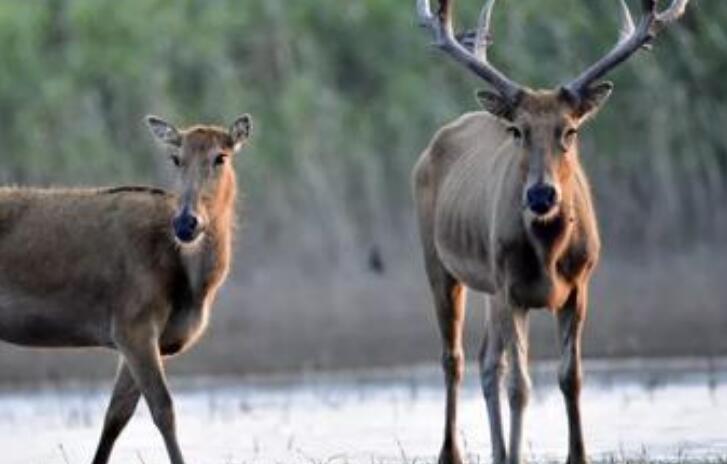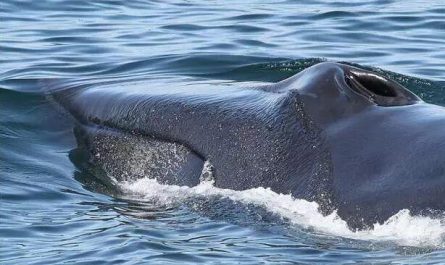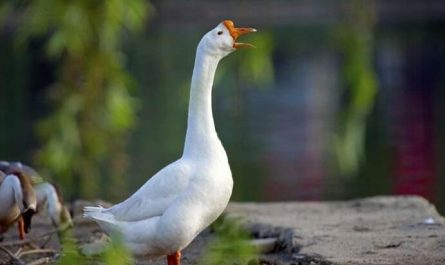What is the reason for the migration of deer
The migration behavior of deer is an adaptation phenomenon.With this activity, the environmental conditions they need in a specific life period can be met, so that the survival of the individual and the prosperity of the race can be reliably guaranteed.
The most amazing move of the reindeer is the large migration of hundreds of kilometers a year. It is also a mountain crossing, water wading, courageous forward, and one after another. But unlike the lemmings, the reindeer migration is not a collective suicide, but a long-distance journey full of rationality.
As soon as spring arrives, they leave the subarctic forests and grasslands that overwinter, and head north along the established route that has remained unchanged for hundreds of years. The female deer always takes the lead, followed by the buck. They are mighty, driving straight in, walking day and night, eating while walking, taking off the thick winter clothes along the way, and growing new thin long hair. The fluff that was taken off fell on the ground, just as a natural signpost.
Year after year, I don’t know how many centuries have passed. Normally, they always advance at a constant speed and in order. Only when the wolves or hunters are chasing them, they will rush and start a life race. Therefore, some people call the reindeer migration the “victory escape.”
The growth rate of the young reindeer is unmatched by many animals, and it is beyond the reach of human beings. The doe is conceived in winter and gives birth during the migration in spring. The young deer can follow the doe two or three days after birth, and can run as fast as their parents in a week, at a speed of up to 48 kilometers per hour. This is also necessary for survival, or forced out, because no matter where the reindeer goes, they cannot escape the hunting and chasing of hungry wolves and greedy hunters. If they cannot run fast, there is only one dead end.
Five wonders of animal migration
1. Arctic tern: long-range flight
Not only can human wealthy people see summer twice a year, Arctic terns have also enjoyed this treatment for centuries. These little seabirds are the world record holders with the farthest migration distance among the known animals. Arctic terns move from their breeding grounds in northern Canada to the coast of Antarctica and then return to their breeding grounds. Arctic terns fly round and round according to the prevailing wind direction. Each bird goes back and forth once a year, flying an average of more than 70,000 kilometers. Arctic terns have a long life span, and they can live for more than 30 years. It is estimated that these long-distance flying champions will fly more than 2.4 million kilometers in their lifetime, enough to travel to and from the moon 5-6 times.
2. Wildebeest migration: thrilling
After decades of hard work, filmmakers and wildlife documentaries have confirmed that more than 1 million African wildebeests and zebras migrate once a year. Every February, the great wildebeest migration in the Ngorongoro region of the Serengeti Plain in southern Tanzania begins. The specific time for the start of migration depends on the progress of the calving season. During the calving season, about 500,000 new lives will be born in the migrating team. At the beginning of March, there will be more than 500,000 zebras, nearly 2 million wildebeests, and about 100,000 other herbivores. Large-scale migration activities are coming. They will cross the border of the Maasai Mara region in Kenya and head to the grassy plains and woodlands of the western Serengeti.
The last obstacle that this animal army must face to the Serengeti, the Mara River, is the most challenging. In the arid and barren savanna, they experience migration for several weeks, during which they get very little food and water, which greatly weakens their physical strength. They have to cross the Mara River, where the current is swift and there are a lot of hungry crocodiles lurking in it, before they can reach the “Garden of Eden” with lush vegetation. Approximately 250,000 wildebeests will die during the 2896.74 km migration. However, it turns out that these herds will soon recover and even become stronger than before.
3. Army of Crabs: Climb and go
Christmas Island is an isolated island in Australia, located in the Indian Ocean. There are approximately 1,400 residents and 120 million Christmas ground crabs on the island. Fortunately for the residents of the island, these crabs are not carnivorous (only occasionally cannibalism). Every year tens of millions of crabs migrate to the sea to lay eggs. The scene is very spectacular.
But the story does not end here. Once the little crabs pass the larval stage in the ocean, they will climb up the coast and migrate to the rainforest in the middle of the island. Although these small crabs are small, their numbers are surprising: each adult female crab produces approximately 120,000 fertilized eggs. If calculated according to this, I am afraid the total will be incredibly large. The “red tide” formed by small crabs covers the entire beach, and they may be seen throughout the town and the entire golden route.
4. Monarch butterfly: can fly with wings
The monarch butterfly is the only migratory butterfly on earth. The flight distance and duration of their migration may be the longest among insects. The lifespan of the monarch butterfly is less than 2 months, but the migration time is much longer than this time, so a migration often takes many generations to complete. Humans did not discover their winter habitat in the jungles of central Mexico until 1975.
Can monarch butterflies continue their large-scale migration activities next year? Currently they are facing a series of difficulties, some of which are caused by human factors. Illegal deforestation, logging and population pressure will increase their migration difficulties. In addition, the regular El Niño phenomenon will also affect their migration. For example, the El Niño phenomenon from 2009 to 2010 caused their winter habitat to be attacked by rainfall, hail and heavy snow. How long can the migration of the monarch butterfly last? Only time can tell us all.
5. Reindeer: large forces migration
The earliest known and best-proven mass migration animals are the northern reindeer. Reindeer do not migrate along the same route every year. Where they migrate depends mainly on weather conditions and food abundance. The three largest reindeer herds are the George River reindeer herd in northern Quebec, Canada, the Northwest Arctic reindeer herd in northwestern Alaska, and the Tamil Peninsula reindeer herd found near the Bering Strait. The large reindeer herd migrates about 160.93 to 804.67 kilometers each year. Although reindeer and elk belong to the same species, it is customary to use the latter to refer to the reindeer domesticated by the Sami people who live in northern Lapland in Scandinavia.






